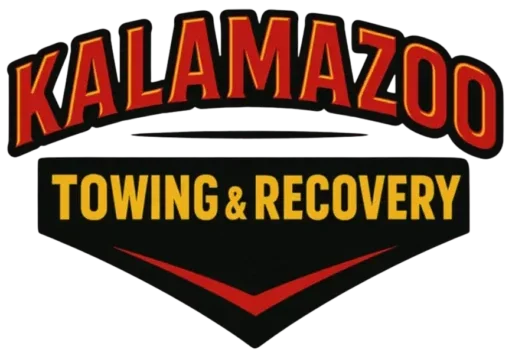Picture this: You’re driving down the highway when suddenly your engine starts making strange noises, steam rises from under the hood, and you’re forced to pull over. Your heart sinks as you realize you need car towing services. Don’t panic – this comprehensive guide will transform you from a helpless motorist into an informed driver who knows exactly what to do when towing becomes necessary.
Every year, millions of drivers face unexpected breakdowns, accidents, or vehicle emergencies that require professional car towing. Whether you’re dealing with a flat tire, dead battery, or major mechanical failure, understanding the towing process can save you time, money, and stress. As automotive experts with decades of experience in roadside assistance, we’ll walk you through everything you need to know about car towing services.
Understanding How Car Towing Works
Car towing operates as a sophisticated rescue system designed to safely transport disabled vehicles from one location to another. Think of it as an emergency transportation network that connects stranded drivers with professional recovery services through multiple communication channels and dispatch systems.
The Towing Process Breakdown
The modern towing system functions like a well-oiled machine with interconnected parts working together. When you call for towing services, your request enters a dispatch system that identifies your location, assesses your needs, and connects you with the nearest qualified towing operator. GPS technology, mobile apps, and 24/7 call centers form the backbone of this system.
Your insurance company, roadside assistance program, and local towing companies all play crucial roles in this ecosystem. The process flows from initial contact through dispatch, vehicle assessment, loading, transport, and final delivery – each step requiring specific protocols and safety measures.
Key Factors That Determine Your Towing Experience

Distance and Location Accessibility
The primary factor affecting your towing experience is your vehicle’s location and the distance to your desired destination. Remote highways, narrow city streets, and challenging terrain all impact towing complexity and cost. Urban areas typically offer faster response times but may charge premium rates during peak hours.
How Modern Technology Helps: GPS tracking systems allow towing companies to locate you precisely and calculate optimal routes. Mobile apps can share your exact coordinates, reducing confusion and wait times.
Vehicle Type and Weight Requirements
Your car’s size, weight, drivetrain configuration, and current condition significantly influence towing requirements. All-wheel-drive vehicles need flatbed towing to prevent drivetrain damage, while standard front-wheel-drive cars can often use wheel-lift towing methods.
How Professional Assessment Helps: Experienced tow truck operators evaluate your vehicle’s specific needs, ensuring the right equipment is deployed from the start.
Towing Equipment and Truck Selection
Different situations demand different towing solutions. Flatbed trucks offer maximum protection for luxury vehicles, while wheel-lift systems work efficiently for routine towing needs. Heavy-duty wreckers handle large vehicles and complex recovery situations.
How Proper Equipment Selection Helps: Professional towing services maintain diverse fleets to handle any situation, from compact cars to large SUVs and trucks.
Weather and Road Conditions
Adverse weather conditions like snow, ice, rain, or extreme heat create additional challenges for safe towing operations. These factors affect response times, safety protocols, and equipment requirements.
How Weather Monitoring Systems Help: Professional towing companies track weather conditions and adjust their response strategies accordingly, ensuring safe operations.
Time of Day and Traffic Patterns
Peak traffic hours, nighttime operations, and weekend emergencies all influence towing logistics. Rush hour traffic can significantly extend response and transport times.
How Advanced Dispatch Systems Help: Modern scheduling systems consider traffic patterns and optimize routing to minimize delays.
Insurance Coverage and Payment Options
Understanding your insurance coverage, roadside assistance benefits, and payment options before you need towing services prevents delays and unexpected costs.
How Digital Payment Systems Help: Modern towing companies accept multiple payment methods, including mobile payments and direct insurance billing.
Legal Compliance and Safety Standards
Professional towing operations must comply with local regulations, licensing requirements, and safety standards. This ensures proper insurance coverage and accountability.
How Regulatory Compliance Helps: Working with licensed, insured towing companies protects you from liability and ensures professional service standards.
Professional Towing Services and Best Practices
Emergency Response and Scheduling
When calling for towing services, provide clear, accurate information about your location, vehicle type, and the nature of your problem. Use landmarks, mile markers, or GPS coordinates to help operators find you quickly. Be prepared to wait in a safe location away from traffic.
Stay with your vehicle if it’s safely positioned, but move to a secure area if you’re on a busy highway. Keep your phone charged and maintain communication with the towing dispatcher for updates on arrival times.
Research and Company Selection
Before you need emergency services, research reputable towing companies in your area. Look for businesses with positive online reviews, proper licensing, and 24/7 availability. Save multiple contact numbers in your phone and note which companies your insurance covers.
Check company websites for service areas, response times, and specialties. Some companies excel at luxury vehicle transport, while others focus on heavy-duty recovery operations.
Communication and Documentation
Effective communication with towing professionals ensures smooth service delivery. Describe your situation clearly, mention any special requirements (like all-wheel drive), and confirm pricing before authorizing service.
Take photos of your vehicle’s condition before towing for insurance purposes. Document any existing damage and ensure the tow truck operator notes these details on their service report.
Cost Management and Tracking
Monitor your towing expenses and compare costs between different service providers. Keep records of service quality, response times, and overall satisfaction to guide future decisions.
Track which situations require towing versus roadside repairs to better understand your vehicle’s reliability patterns and maintenance needs.
Implementation Plan: 7-Phase Emergency Preparedness Strategy

Phase 1: Prevention and Basic Preparation (Week 1)
Build your emergency kit with essential items: jumper cables, tire pressure gauge, basic tools, emergency contact list, and roadside assistance information. Research and save contact information for three reputable local towing companies.
Phase 2: Insurance Coverage Review (Week 2)
Contact your insurance agent to understand your towing coverage limits, deductibles, and preferred service providers. Consider upgrading your roadside assistance coverage if current limits seem inadequate.
Phase 3: Vehicle Health Assessment (Week 3)
Schedule a comprehensive vehicle inspection to identify potential issues before they cause roadside emergencies. Address worn tires, aging batteries, and fluid leaks proactively.
Phase 4: Communication System Setup (Week 4)
Install roadside assistance apps on your smartphone and ensure your emergency contact information is current. Test your phone’s GPS functionality and consider backup communication methods.
Phase 5: Safety Protocol Development (Month 2)
Develop safety protocols for different driving scenarios. Plan rest stops for long trips and identify safe areas along your regular routes where you could wait for assistance if needed.
Phase 6: Training and Family Education (Month 3)
Practice using your emergency equipment and review your emergency procedures. Ensure all family members who drive know how to request towing services and what information to provide.
Phase 7: Ongoing Maintenance and Updates (Quarterly)
Regularly review and update your emergency preparedness plan. Refresh contact information, check equipment functionality, and assess whether your coverage meets your current needs.
Golden Rules for Successful Towing
Safety Always Comes First: Never attempt to fix complex mechanical problems on busy roadways. Move to the safest possible location before calling for help.
Preparation Prevents Problems: The middle of an emergency is not the time to start researching towing companies. Preparation prevents panic and poor decisions.
Clear Communication Saves Time: Accurate information speeds up the rescue process. Know your location, vehicle details, and specific problem.
Know Your Coverage Limits: Understand what your insurance covers before you need it. Know deductibles, coverage limits, and preferred provider networks.
Document Every Service: Take photos, keep receipts, and maintain records of all towing services for insurance and tax purposes.
Trust Professional Expertise: Licensed towing operators have the training and equipment to handle your situation safely. Let them do their job.
Advanced Strategies for Smart Drivers

Fleet and Multiple Vehicle Management
If you manage multiple vehicles, establish relationships with commercial towing services that offer fleet discounts and priority response. Negotiate annual service contracts for predictable pricing and guaranteed availability.
Specialized Vehicle Considerations
Classic cars, luxury vehicles, and modified automobiles require specialized towing equipment and handling procedures. Research companies that specialize in your vehicle type and maintain appropriate insurance coverage.
Business and Commercial Applications
Business owners should consider the impact of vehicle downtime on operations. Establish backup transportation plans and maintain relationships with multiple towing providers to ensure rapid response.
Technology and Monitoring Systems
Advanced fleet management systems can automatically detect vehicle problems and request assistance before drivers realize they need help. Consider investing in telematics systems that monitor vehicle health and location.
Future Trends and Industry Evolution
The towing industry is evolving rapidly with technological advancement and changing consumer expectations. Electric vehicle adoption is driving demand for specialized equipment and training, as EV towing requires different procedures to protect battery systems and electronic components.
Autonomous vehicle technology will eventually reshape the towing industry, with vehicles potentially able to diagnose problems and request assistance automatically. However, human operators will remain essential for complex recovery operations and customer interaction.
Mobile payment systems and digital service platforms are streamlining the towing process, making it easier to request, track, and pay for services. Expect continued improvements in response times and customer communication through smartphone integration.
Environmental considerations are pushing the industry toward more efficient operations and eco-friendly practices. Hybrid and electric tow trucks are beginning to appear in urban markets, reducing emissions and operating costs.
Take Action Today for Tomorrow’s Peace of Mind
Don’t wait for an emergency to expose gaps in your preparation. Your vehicle’s reliability depends on proper maintenance, but even the most well-maintained cars can experience unexpected problems. By implementing the strategies outlined in this guide, you’re taking proactive steps to protect yourself, your passengers, and your investment.
Start building your emergency preparedness plan today. Research local towing companies, review your insurance coverage, and create your emergency kit. The few hours you invest now could save you significant stress, time, and money when you need towing services most.
Remember, successful drivers aren’t those who never experience problems – they’re the ones who handle problems efficiently and safely. Your preparation today determines your confidence tomorrow. Take action now to ensure you’re ready for whatever the road brings your way.

